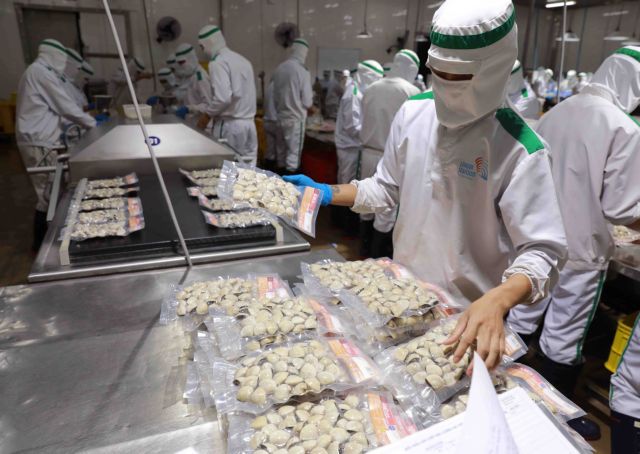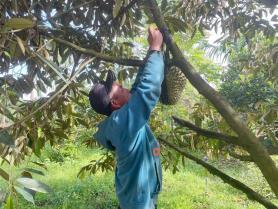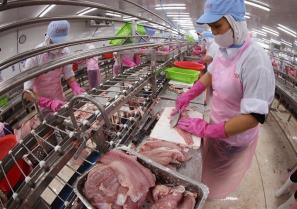Experts believe that amid global trade shifts, including changes in trade defence measures and reciprocal tax policies, meeting origin rules under the Comprehensive and Progressive Agreement for Trans-Pacific Partnership (CPTPP) could be a crucial support for Vietnamese exports.

HÀ NỘI — Experts believe that amid global trade shifts, including changes in trade defence measures and reciprocal tax policies, meeting origin rules under the Comprehensive and Progressive Agreement for Trans-Pacific Partnership (CPTPP) could be a crucial support for Vietnamese exports.
At a seminar on taking advantage of the CPTPP's origin rules held by Công thương (Industry and Trade) magazine on Wednesday, Trịnh Thị Thu Hiền, deputy director of the Import-Export Department under the Ministry of Industry and Trade, noted that Việt Nam has made significant progress in using incentives offered by the CPTPP.
In 2019, Việt Nam’s export turnover using CPTPP certificates of origin (C/O) was only about US$700 million, or 2 per cent of total exports.
By 2024, this figure rose to nearly $5 billion, or 8.8 per cent, a positive signal given that many CPTPP member markets are also part of other free trade agreements (FTAs), offering multiple preferential tariff options for exporters.
New markets such as Mexico, Canada and Peru have become standout destinations for Vietnamese goods. The rate of C/O use for exports to Mexico surged from 7 per cent in 2019 to 47 per cent in 2024, with key products like seafood and footwear reaching rates of 70–80 per cent.
In Canada, product groups including suitcases, handbags, handicrafts and seafood achieved C/O issuance rates between 40–80 per cent.
However, Hiền said that the overall CPTPP utilisation rate remains lower than that of the Vietnam-EU Free Trade Agreement or the Vietnam-UK Free Trade Agreement. This is not due to a lack of business interest, but rather because exporters are sharing between multiple FTAs, according to Hiền.
For example, in Japan, where Vietnamese goods can benefit from four different trade agreements, the CPTPP C/O utilisation rate is only about 3 per cent. However, the total preferential usage across all FTAs is 50 per cent.
Exports to Australia, one of Việt Nam’s largest trading partners within the CPTPP, have seen remarkable growth thanks to the agreement’s preferential tariffs.
According to Trần Thị Thanh Mỹ, Deputy Consul General of Việt Nam in Sydney and head of the Việt Nam Trade Office in Australia, Việt Nam’s exports to Australia increased from $3.5 billion in 2019 to $6.5 billion in 2024, marking an 83 per cent rise.
However, Vietnamese exporters must still navigate stringent technical barriers, including food safety, quarantine, traceability and packaging standards, as well as fierce competition from countries like China, Thailand, Indonesia and India, all of which have their own FTAs with Australia.
Mỹ said that in addition to improving product quality, Vietnamese businesses need to strengthen their legal and compliance capabilities, enhance localisation of raw materials to meet CPTPP origin criteria and foster industry-wide collaboration to create collective strength in market penetration.
As for the US, reciprocal tax policies have accelerated global supply chain restructuring. Many exporters are now pivoting towards FTA markets like Australia and other CPTPP member countries to benefit from stable tariff incentives.
Although short-term export disruptions are inevitable, Mỹ said that Australia remains a market with a lot of potential for Vietnamese products in the long run, thanks to its high-income consumers, steady demand and the benefits of CPTPP membership.
Export Director of Langer Việt Nam Co., Ltd. Đỗ Thị Phương Thảo said that seafood is one of the most competitive product groups under the CPTPP framework.
In the past few years, the company has leveraged CPTPP benefits to diversify its export markets, focusing on Japan, Canada and Australia - all of which offer favourable tariff rates and maintain high yet stable standards.
To fully capitalise on tariff incentives, the firm has prioritised compliance with rules of origin, invested in raw material regions and developed traceability systems to build a sustainable and reputable 'Vietnamese clam' brand.
According to Thảo, the US' reciprocal tariffs have increased product costs for imports into the US market, reducing the competitiveness of Vietnamese goods compared to those from other countries.
However, business representatives also view this challenge as an opportunity to review and optimise their entire supply chain, to fully take advantage of FTAs like the CPTPP.
By effectively applying the agreement’s rules of origin, companies can expand into other member markets, reduce reliance on a single destination and maintain more stable, sustainable growth.
"Instead of remaining passive in the face of reciprocal tax policies, we view them as a driving force to restructure, enhance competitiveness and move toward more sustainable development within the global value chain,” Thảo said.
Hiền said that businesses should not view rules of origin as barriers, but rather as opportunities to standardise production and align with international practices.
She also reminded exporters to maintain comprehensive origin documentation to satisfy verification requests from importing countries’ customs authorities, warning that even if goods technically meet origin criteria, incomplete records could still disqualify them from tariff incentives.
According to Hiền, the Import-Export Department is implementing a series of coordinated measures to help enterprises strengthen their capacity to comply with origin requirements.
Key initiatives include finalising a new decree to replace Decree 31/2018/NĐ-CP on the origin of exported and imported goods. The new regulation will tighten controls on origin fraud, ensuring a fair and transparent business environment.
Additionally, the department is promoting decentralisation of C/O issuance to local authorities, which will streamline processing times and create more favourable conditions for exporters. — VNS





